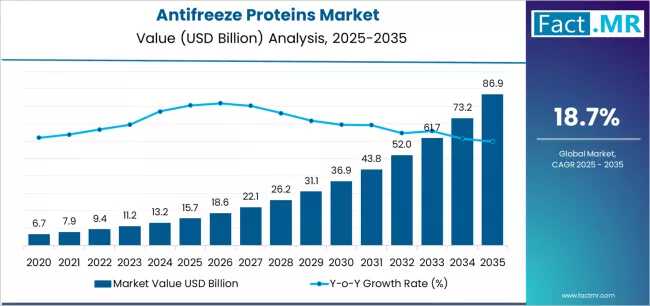The UK anti-settling agents market is entering a phase of robust expansion as manufacturers across coatings, construction chemicals, inks, agrochemicals, and industrial fluids increase their focus on formulation stability and regulatory compliance. New industry analysis indicates the market is on track to reach £182 million in 2025, advancing at a 7.1% CAGR through 2029 as companies adopt high-performance dispersion technologies to improve product consistency and operational efficiency.
Anti-settling agents—spanning organoclays, modified polyamides, treated silicas, and hybrid rheology modifiers—play a critical role in preventing pigment sedimentation, enhancing viscosity control, and extending shelf life in liquid formulations. Growth is being influenced by the UK’s accelerating shift toward waterborne systems, the surge in construction activity, and heightened demand for precision coatings and printed packaging.
Construction and Paints Segment Remains the Largest Consumer
Construction chemicals and architectural coatings remain the top end-user category, accounting for 41.8% of total UK anti-settling agent demand in 2024. Renewed momentum in infrastructure upgrades, energy-efficient refurbishments, and commercial development projects continues to fuel consumption.
Key performance indicators for 2024 include:
-
Decorative coatings production rose 5.6% year-over-year, reflecting growing activity in both residential and commercial renovation.
-
Industrial coatings output increased 6.3%, supported by strong order volumes from transportation, machinery, and metal finishing industries.
Waterborne systems remain a major driver of additive adoption. Anti-settling agents for waterborne coatings grew 8.4% in 2024, supported by tightening environmental specifications and the shift toward low-odor, low-VOC products.
“Stability across varied storage conditions has become a top priority for manufacturers, distributors, and applicators,” said a senior coatings formulation specialist involved in the analysis. “Advanced anti-settling technologies now directly influence product quality, color uniformity, and field performance.”
Growing Adoption of Low-VOC and Bio-Based Formulation Enhancers
The UK’s increasingly strict environmental and chemical compliance requirements are accelerating the shift toward eco-conscious stabilizing additives. Manufacturers are gradually reducing their reliance on older solvent-rich systems and transitioning to cleaner, high-performance ingredients.
According to the market assessment:
-
Bio-based anti-settling additives expanded 12.9% year-over-year, marking the fastest growth rate across product types.
-
Solvent-free additive systems now represent 34% of the UK market, up from 27% just three years prior.
-
Organoclay products saw a 9% YoY increase, particularly in industrial and marine coatings using waterborne formulations.
Producers of acrylics, epoxies, urethanes, alkyds, and hybrid resins are increasingly implementing additive systems that resist temperature-induced settling—a necessity amid more volatile warehousing environments and wider distribution cycles.
Printing Inks and Packaging Applications Rebound Strongly
The UK’s printing and packaging industries reported one of their strongest rebounds in recent years as brands expand investment in high-definition labeling, flexible packaging, and digital printing. Anti-settling agents are essential for pigment uniformity, nozzle stability, and optimal flow behavior in both traditional and digital printing systems.
Industry highlights:
-
Printing and packaging inks represented 16.5% of UK anti-settling agent consumption in 2024.
-
UV-curable and high-viscosity inks recorded a 10.2% increase in additive demand, driven by the need for consistent suspension performance.
-
Digital printing applications are projected to grow at a 6.8% CAGR through 2029, supporting higher use of next-generation dispersing agents.
Manufacturers are emphasizing additives that support micro- and nano-pigment technologies while reducing downtime linked to sedimentation and nozzle clogging—critical as UK print houses continue to automate operations.
Growth Extends Across Agrochemicals and Industrial Lubricants
Beyond coatings and inks, the anti-settling agents market is gaining momentum in specialty segments such as agrochemical formulations and industrial fluids. Suspension concentrates, foliar sprays, and emulsions rely heavily on high-performance stabilizers to preserve consistency during long-term storage.
In 2024:
-
The agrochemical sector accounted for £21 million of anti-settling agent demand.
-
Industrial lubricants, metalworking fluids, and related products contributed an additional £17 million, benefiting from the UK’s advanced manufacturing uptick.
Hybrid silica–clay stabilizers are increasingly used to enhance flow control and maintain uniformity in harsh storage environments, including high-humidity agricultural settings and temperature-variable industrial sites.
Domestic Production Capacity Increases to Strengthen Supply Chain Resilience
In response to fluctuating international logistics costs and evolving import requirements, UK-based producers have expanded their domestic output of rheology modifiers and anti-settling systems. National production capacity has grown 14% since 2023, reducing lead times and improving the availability of high-demand additives.
Several factors driving this shift include:
-
Rising freight and importation expenses
-
Regulatory divergence requiring tighter chemical documentation
-
A growing preference for regionally tailored additive solutions
Local producers are also investing in R&D aimed at improving freeze–thaw resilience, enhanced compatibility across resin types, and stability under low-humidity storage conditions—key advantages for UK-specific applications.
Browse Full Report : https://www.factmr.com/report/antifreeze-proteins-market
Market Outlook: Innovation to Drive the Next Growth Phase
Based on current demand trends, the UK anti-settling agents market is forecast to exceed £240 million by 2029, with advanced stabilizing additives expected to represent nearly 60% of total market value during this period.
The industry is expected to be shaped by three major innovation priorities:
-
AI-Driven Formulation Development – Data-enabled modelling to deliver more efficient, tailored additive solutions.
-
Bio-Hybrid Additives – Combining natural ingredients with advanced synthetic technologies for enhanced eco-performance.
-
Optimized Additives for Automated Production – Supporting tighter quality control as manufacturers deploy smart batching and in-line monitoring systems.



